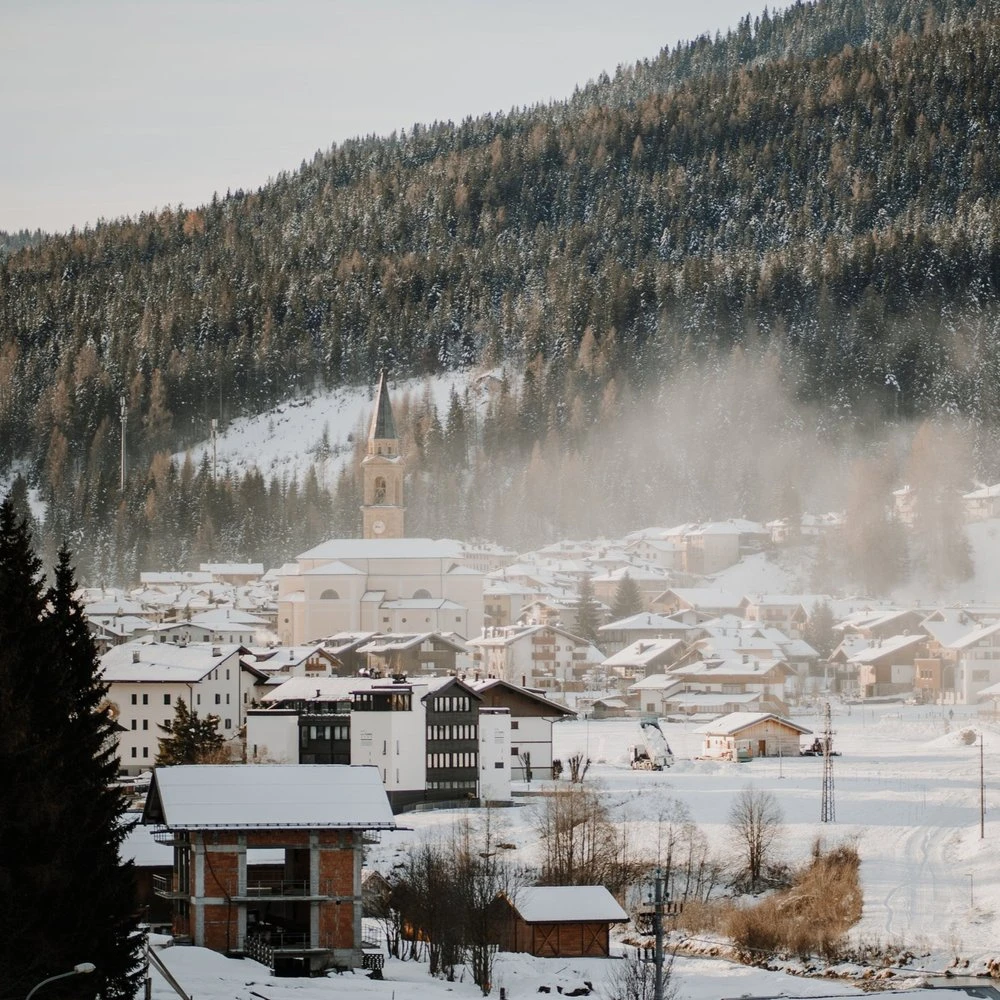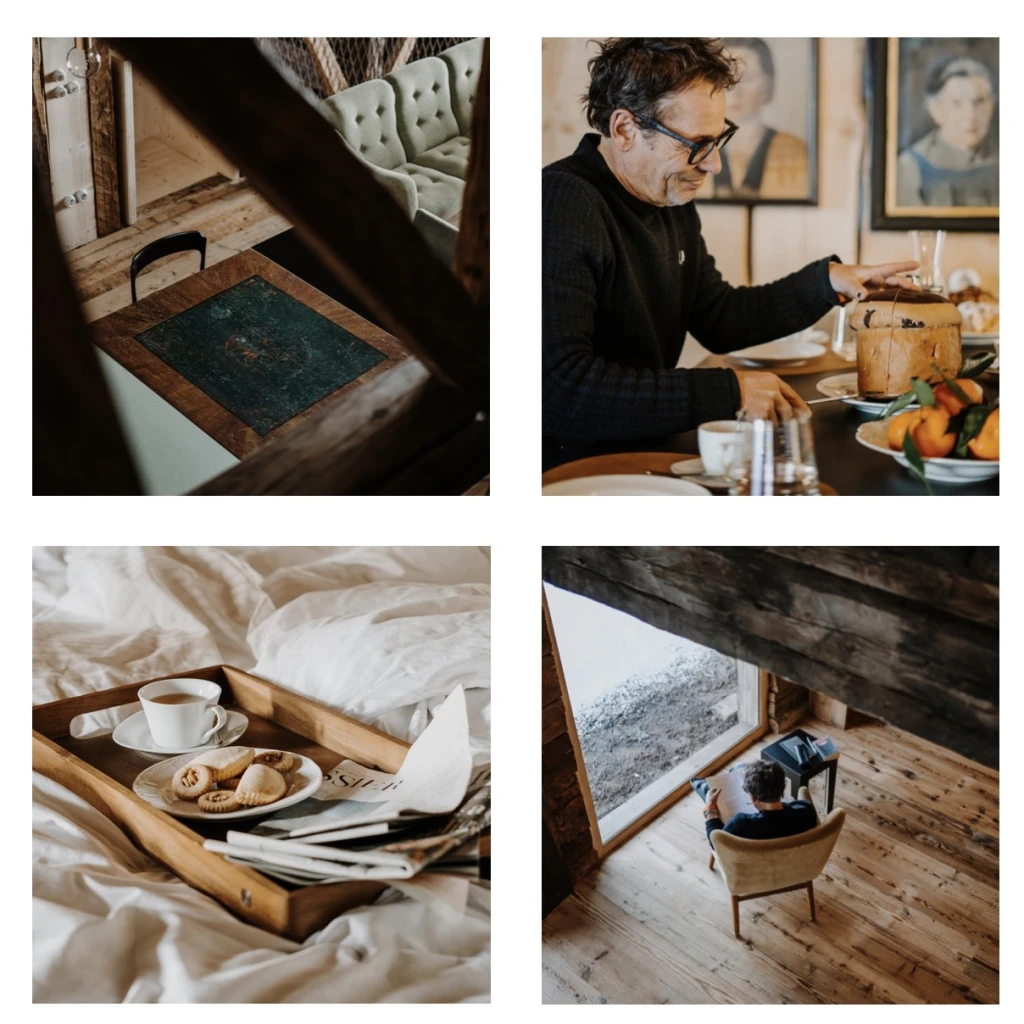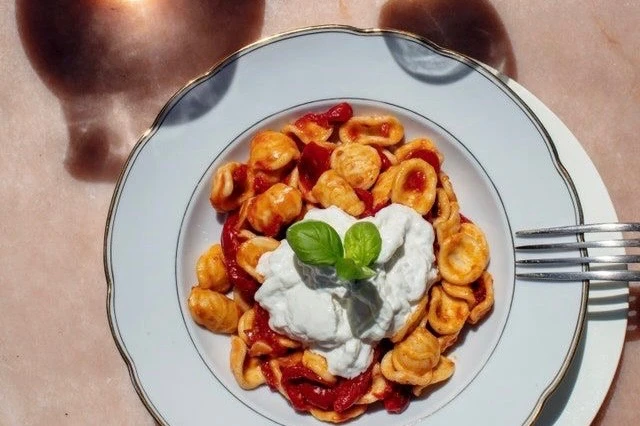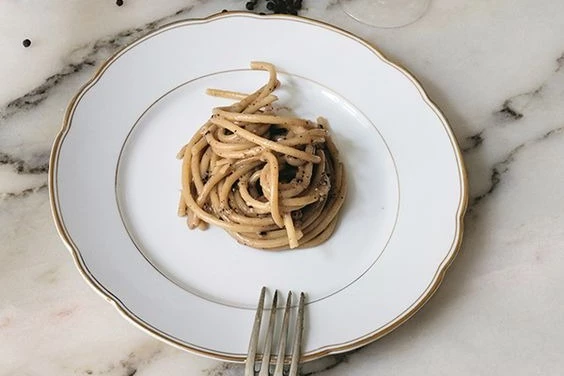Casunziei’ dumplings
While staying at this Historic Farmhouse in the Comelico Valley on the rim of the Dolomites, we fell in love with the ‘casunziei’ dumplings: Traditional dumplings with fresh pasta and a delicious heart of red beet filling. Great served with some melted butter and poppy seeds to highlight its smooth flavor.
The culinary tradition of the Camelico is based on alpine farming. Each village in the valley has at least one restaurant with its own specialties and traditions. Try them all… it is a delicious way to discover this area. For us, the ‘casunziei’ was the winner, and would like to share the recipe with you!
Pasta dough*
*Tip: If you don't have time to make fresh pasta—or would prefer not to—you can use wonton wrappers instead
1 1/2 cups unbleached, all-purpose flour
2 medium eggs
1/4 cup water
2 tablespoons olive oil
Salt
For the filling, sauce, and assembly
2 cups cooked, peeled, and diced red beet (about 1 large beet)
1 cup fresh ricotta
1/4 cup grated Parmigiano Reggiano
2 tablespoons chopped parsley
1 tablespoon chopped thyme
Salt, to taste
Semolina flour or fine cornmeal, for prepping the casunsei
1 egg, for assembling pasta
1 stick of butter
2 tablespoons poppy seeds
Instructions
Mound the flour on a board and make a well in the center. Drop the eggs and the water into the well.
Using a fork, gently break up the eggs and start to incorporate the flour from around the inside of the well.
When the dough begins to thicken, use a bench scraper to lift and fold the dough over, incorporating more flour a little at a time until you have a dough that is easy to knead. By the time you’ve incorporated about half the flour, you should be able to change your technique, kneading the dough with your hands until it all comes together in a mass.
Continue kneading until you have a smooth, compact dough, rubbing the outside with the olive oil and kneading it in. If the dough seems too dry, dip your hands in water and knead again—this will add just a touch of moisture. On the other hand, if the dough seems too wet, add a sprinkle of flour and knead to combine.
Set the dough aside, covered in plastic wrap, for at least 15 minutes. At this point, you may also refrigerate the wrapped dough for up to 6 hours, being sure to bring it back to room temperature before rolling it again.
To make the filling: Purée the beets, ricotta, cheese, parsley, thyme, and salt (to taste) in a food processor or blender until combined.
To make the casunsei: Fill a pastry bag with the beet filling and sprinkle a sheet tray with a layer of semolina flour or fine cornmeal.
Beginning with half the pasta dough (and keeping the other half covered), roll out the dough on a lightly floured board to make a long rectangle, about 27 inches long and 4 inches wide.
Pipe dabs of filling, about a tablespoon each and 1/2-inch apart, in a regular line down the length of the sheet. Don’t put the dabs in the center of the sheet—rather, keep them towards the bottom so that you can fold the top half of the sheet over them. You should be able to get at least 18 dabs on the first sheet of pasta.
Break the egg into a small bowl and beat in about 1/4 cup of water, then brush this mixture along the edges and in between each of the dabs of filling.
Fold the top half over all the way along, pressing down with the side of your hand along the edges and in between each of the filling dabs to make a series of 18 ravioli, approximately 1 1/2 by 2 inches, each one filled with beet purée.
Use a round pasta cutter to stamp them out, making sure that each one is sealed well.
Carefully, pick up the ravioli and gently lay them, one by one, on the prepared tray. Do not allow them to touch or overlap. If you’re not going to cook them right away, cover them with a dry kitchen towel.
Repeat with the remaining pasta dough.
To make the dish and sauce: Get a pot of pasta water on to boil—many people believe in salting the water when it comes to a boil but I always salt it ahead of time so I don’t forget.
Meanwhile, melt the butter in a pan on a gentle heat and add the poppy seeds to gently toast, being sure not to let the butter brown. Remove from heat.
When the water is boiling, tip the casunsei gently into the pot. The pasta should float when cooked.
Gently scoop them out with a slotted spoon as ready, draining as much water off them as you can.
Carefully lay them in the pan with the melted butter, letting the butter and poppy seeds coat the casunsei before placing them in a serving bowl or individual plates. Drizzle any remaining butter over them and eat immediately.
*Tip: If you don't have time to make fresh pasta—or would prefer not to—you can use wonton wrappers instead
Approx. 24 ravioli, enough for two people
Recipe on Food52 ~ by Sara Jenkins










